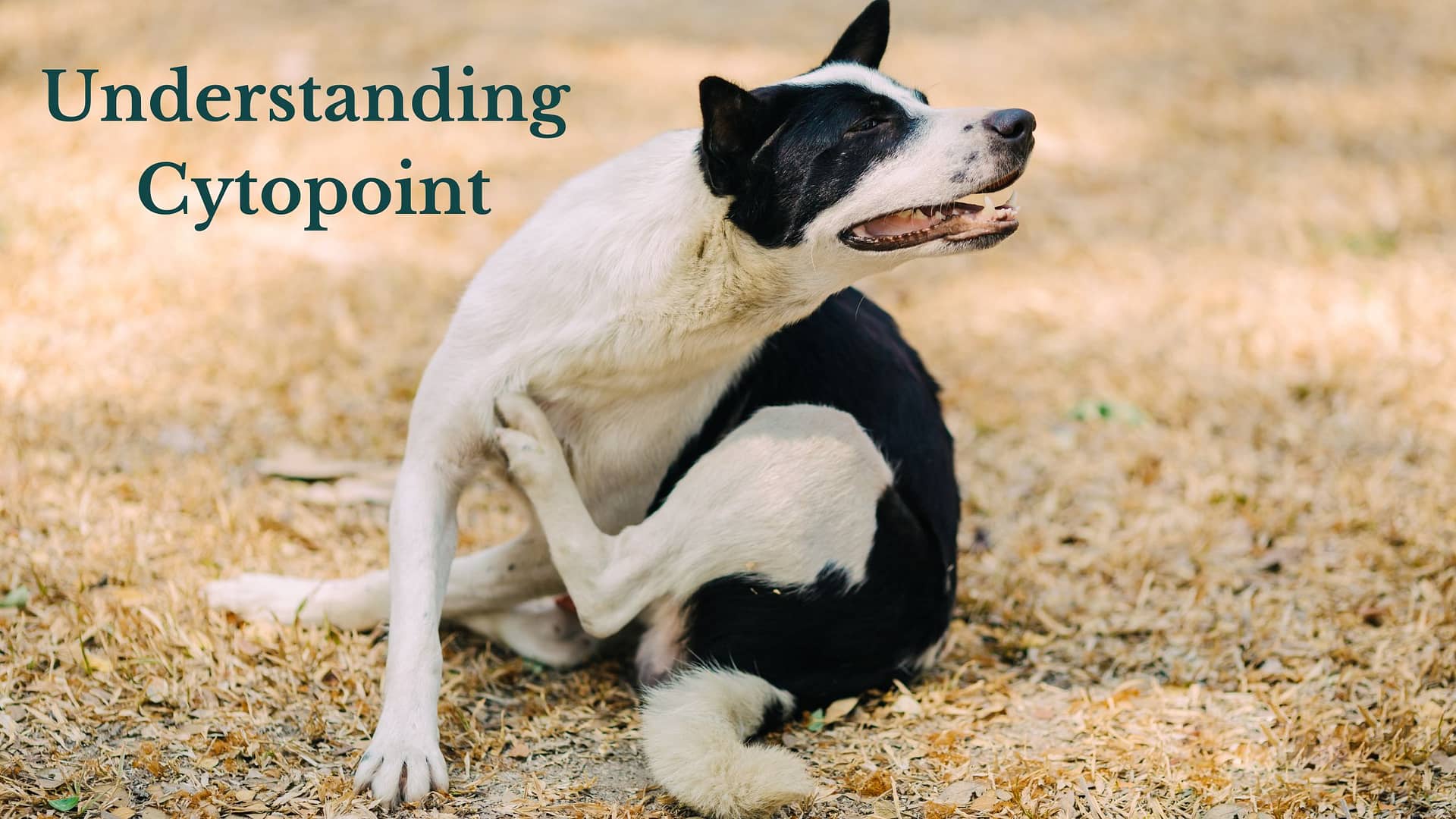
Understanding Cytopoint: A Comprehensive Guide for Pet Parents

As a naturopathic vet, my focus is on natural and holistic approaches to pet health. However, I also recognize the importance of being informed about conventional treatments. One such treatment that has garnered significant attention in recent years is Cytopoint. In this article, we’ll delve into what Cytopoint is, its uses, how it works, potential side effects, and natural alternatives for managing skin allergies in dogs.
What is Cytopoint?
Cytopoint (lokivetmab) is a synthetic injectable monoclonal antibody therapy designed to target and neutralise certain proteins causing allergic itching (atopic dermatitis) in dogs.
Atopic dermatitis is a common chronic skin condition characterised by inflammation, itching, and discomfort.
Cytopoint specifically targets and neutralises interleukin-31 (IL-31), a key protein involved in the signalling pathway that causes itching and inflammation in atopic dermatitis.
How Does Cytopoint Work?
Cytopoint works by mimicking the natural antibodies produced by the dog’s immune system. When injected, it binds to IL-31, preventing it from interacting with its receptor on nerve cells. This action blocks the itch signal from being sent to the brain, thereby reducing the sensation of itching. The effects of Cytopoint can last from 4 to 8 weeks, providing relief from itching and inflammation during that period.
Cytopoint is not a treatment for the root cause of the disease and therefore will not be a cure for the dog.
It specifically targets and neutralises interleukin-31 (IL-31).
Interleukin-31 (IL-31) is an inflammatory cytokine with several roles:
- IL-31 can cause inflammatory bowel disease, airway hypersensitivity, and dermatitis.
- IL-31 also facilitates cell-mediated immunity against pathogens.This means that blocking IL-31 may make your dog more vulnerable to infectious disease.
- IL-31 is also involved in regulating the homeostasis of blood precursor cells. This means that blocking it may contribute to the development of diseases such as IMHA (immune-mediated haemolytic anaemia).
- IL-31 primarily facilitates immune responses and influences neuronal growth. Its effect on immune cells can indirectly influence these processes in immune-mediated diseases. This means that blocking it can lead to dysregulation of the immune system.
IL-31 levels increase when the body is out of balance, causing chronic itching in allergic dermatitis. And that’s the reason why the pharmaceutical company has made this drug.
Important considerations when using Cytopoint
- All underlying causes, such as allergic flea dermatitis, contact dermatitis, food allergies, should be investigated and addressed if Cytopoint is used.
- This product is not intended for long-term therapy if the triggering allergens can be successfully avoided or eliminated.
- If there is no effect or only a limited effect after the second dose, an alternative treatment should be considered.
Potential Side Effects of Cytopoint
- Adverse reactions, such as anaphylaxis, facial oedema, urticaria, difficulty breathing, or persistent gastrointestinal issues
- Pain at the injection site, swelling at the injection site
- Neurological symptoms (convulsions, seizures or ataxia)
- Immune-mediated disease, such as haemolytic anaemia or thrombocytopenia
Cytopoint is harmful because it blocks a message process in the body that’s important for regulating many different processes. The consequences may be several and serious.
Natural Alternatives for Managing Skin Allergies
- Nutrition
- Whole, fresh food: Nutrition is an important cornerstone of health and healing. Consider feeding a whole, fresh diet, preferably raw or cooked.
- Avoid most common allergens: grains, maize, rice, chicken, milk, beef
- Omega-3 Fatty Acids: Supplementing with omega-3 fatty acids from fish oil can reduce inflammation and improve skin health.
- Natural Remedies
- Coconut oil has antibacterial and antifungal properties that can help improve the health of the (especially dry) skin. To use, apply a small amount of coconut oil to the dog’s skin and massage it in.
- Oatmeal has anti-inflammatory properties that can help soothe itchy skin. To use, grind up some oatmeal and mix it into your dog’s bath water. Let him soak for about 10-15 minutes, then rinse thoroughly.
- Baking soda can help soothe itchy skin and reduce inflammation. To use, mix a small amount of baking soda with water to make a paste or add to a bath, then apply to your dog’s skin. Please try this on a small area first as some dogs do not tolerate baking soda well.
- Boosting immune system
- Repairing leaky gut with humic/fulvic acid
- Restoring a healthy microbiome with specific pro- and prebiotics
- Detoxification and organ support with a personalised herbal formula and supplements
- Medicinal Mushrooms
- Reishi, Maitake, Enokitake, ABM: These mushrooms have anti-inflammatory, anti-allergische and immune-modulating properties.
Conclusion
Cytopoint is not a treatment for the cause of the itching and therefore will not be a cure for the dog.
It can cause severe side effects and as it needs to be administered every 4 to 8 weeks it will be very expensive in the long run.
My advice is to avoid Cytopoint and seek the help of a holistic or naturopathic vet for a step by step approach to get to the root cause and help your dog gently and long term with natural approaches.








